Planting Trees as the Climate Changes: No Backyard Is Too Small
I’ve continued my research into the effects of climate change around the world. After avoiding it for many years – or just not focusing on or looking into the details – I’ve started to face it head on.
It feels like a brave thing to do. The next book I want to get at the library is about all of the reasons why humans avoid taking in information – or indeed doing anything about it – regarding climate change. There are a host of psychological response mechanisms, I’m sure, but I’ll let you know when I read it what I find informative. Currently I’m reading a book by Jeff Nesbit called This Is The Way The World Ends: How Droughts and Die-offs, Heat Waves and Hurricanes are Converging on America. I have to say, having all of this information in one place is shocking, but again I must look and so I am keeping my courage in the face of it all.
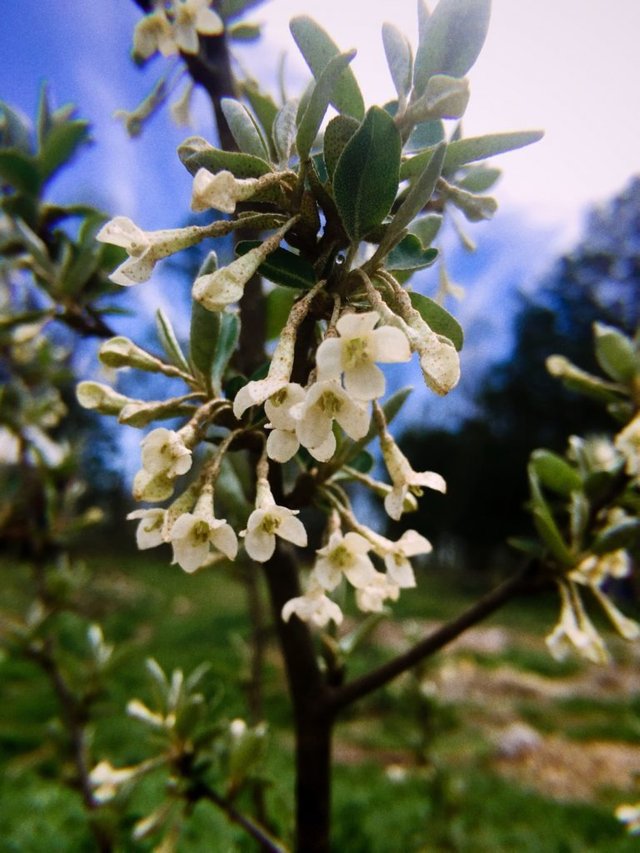
Our Red Gem Goumi plants are flowering this spring! A hardy perennial nitrogen fixing shrub with nutritionally rich berries.
One thing that is repeatedly coming to mind as I read about farmers facing drought and desertification all over the globe is how to make a resilient agricultural system. We all need to eat and it is my feeling that Food and Water, two of the human mainstays, will be the limiting factors as the effects of climate change increase around the world.
We’ve written extensively about perennial agriculture and our reasons for choosing this form of land cultivation. You can read some of our dense articles here.
Why We’ve Chosen Perennial Agriculture
A Case for Edible Landscaping with Perennial Plants | 3 Plant Profiles
The Gardens @mountainjewel | Permaculture Design Process
Grow Food Not Lawns: A Vision for Suburban America
In writing this article, I want to reiterate and restate a few of these ideas through an invigorated lens of heavy reading into current and possible effects of climate change.
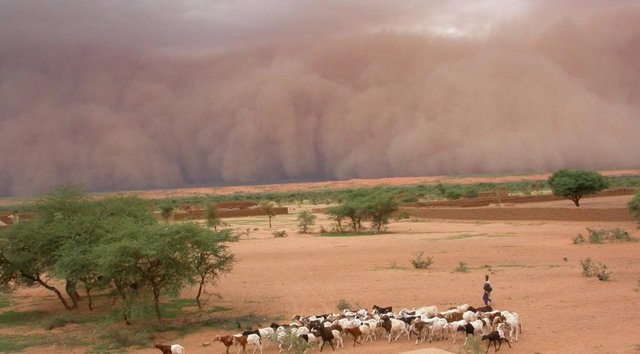
Climate change in the Sahel
In the book mentioned above, one of the chapters focuses on the Sahel, the arid savanna that runs along the southern border of the Sahara Desert. It spans Senegal, Mauritania, Mali, Burkina Faso, Algeria, Niger, Nigeria, Chad, Sudan, South Sudan, Eritrea, Cameroon, Central African Republic, and Ethiopia and has acted as a buffer to the harsh realities of the desert. However, in recent years, farmers have found earlier springs, drought and extreme periods of rainfall leading to water scarcity and destructive weather events, negative effects of land overuse which is all denuding the land making it difficult to grow anything.
People are worried that the Sahara is encroaching upon the Sahel, but in reality it just appears that way. It is the Sahel that is turning desert-like. Leaders of the World Bank, the government of France and others met at the Paris Climate Accord in December 2015 and came upon a “solution” for this and that was to build a Great Green Wall. It was basically plan to plant millions of trees the first years to create a living wall of trees to stop the desertification. Sadly, though not surprisingly, over 3/4 of these trees died within the first two months. China also tried a similar thing and had the same results.
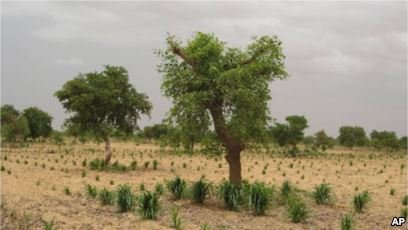
Crops grow better when planted near trees.
Fast forward to what actually is working in the region and we find an indigenous solution.
They have found that farmers were allowing tree seedlings that were growing naturally to grow up near their plants and that these farmers encouraged meager rain that fell to puddle near the trees by digging a hole near the base of the tree.
When viewed from the sky, these patches of farms look like swaths of green. What the large institutions and governments could not figure out from a “top down” solution, the farmers were already naturally doing. They’ve switched the Great Green Wall initiative to be this simple yet effective act of the indigenous farmers: allow the tree seedlings to grow, nurture them alongside your farm crops and build up the wall of green slowly and naturally. I know it wont happen this way, but I think all of the funding should go to these small farmers.
I think the world should pay direct attention to this reality in the Sahel right now. With rising air and ocean temperatures, melting Arctic ice, and climate change happening the world round, we are all going to be called upon to adapt in some way. As I study the climate changes, that is the thing that keeps coming to mind again and again.
Climate Change implies that adaptation is key.
The hitch is that though it is the nature of life on earth to adapt, can we do it quickly enough? For that is what we’re seeing – the earth has always been and always will be in a state of flux and all of the creatures here have survived through evolving, but at times and for certain species that can take generations. We may not have generations. For the worldwide coral reefs dying as a result of rising ocean surface water temps, they certainly cannot adapt that quickly. Neither can many of the ocean creatures faced with acidification of their waters.
It is our role now as humans to look forward and see what we need to put in place now to be as adaptable as possible. To me this looks like creating resilient food systems (and knowing where my water comes from and “catching” it on my landscape- but that’s another article entirely.)
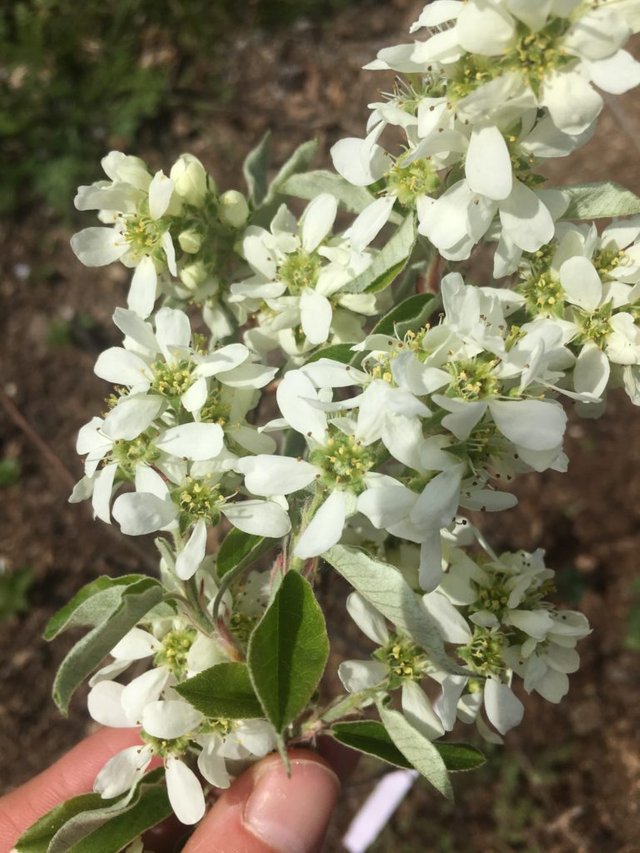
Juneberry (Regent variety) in bloom this month
As far as food is concerned, anyone can see that a plant that has roots and comes again each season (a perennial) is more resilient than a seed sowed into the soil each season (an annual) subject to the whims of the current alchemy of sun, water, temps, etc. A perennial is hardy and has worked on growing its root system year after year. It seems intuitive to have as many of these around bearing food as possible in the event of a shaky and unpredictable climate.
The farmers in the Sahel are facing an emergency situation right now and it is said that desertication, the process of an ecosystem turning into a desert, is possible along the entire Midwest portion of the United States within the next 100 years.
Whether for my lifetime or generations to follow after me, I ask myself, What are the things I can set in motion now that may be beneficial in the event of increased drought, rising temperatures and longer summers?
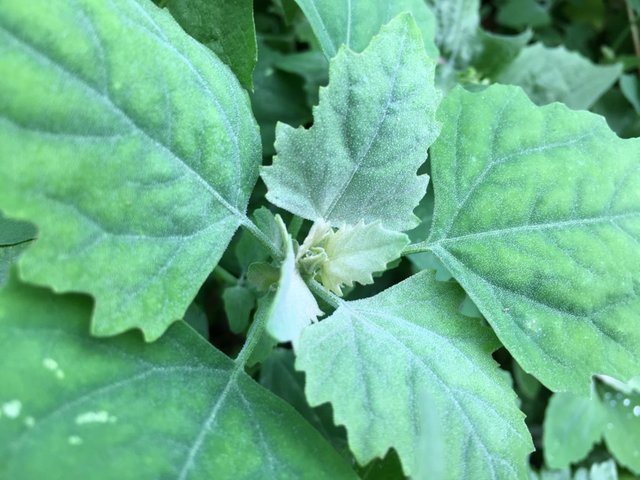
Lambsquarter, a hardy nutritionally dense "weed" grows even in the heat of summer. A relative of quinoa, this plant feeds us when the rest of the salad greens balk at the heat.
My answer is to plant fruit & nut trees (as native and locally hardy as possible), grow perennial roots, find the species that are hardy as hell and that love to grow in the heat (like sweet potatoes, lambsquarter, purslane and others) and get these seed banks established in the soil on my land and start growing these crops now. In the event of desertification, perhaps all of our handiwork will not be able to survive as well, but a tree that is 10-20 years old will have a better chance than one we are planting during the crisis.
37.5 million out of 50 million trees died when planted in the 11 northern Nigeria states worst effected by desertification (pg 62 of This Is How The World Ends).
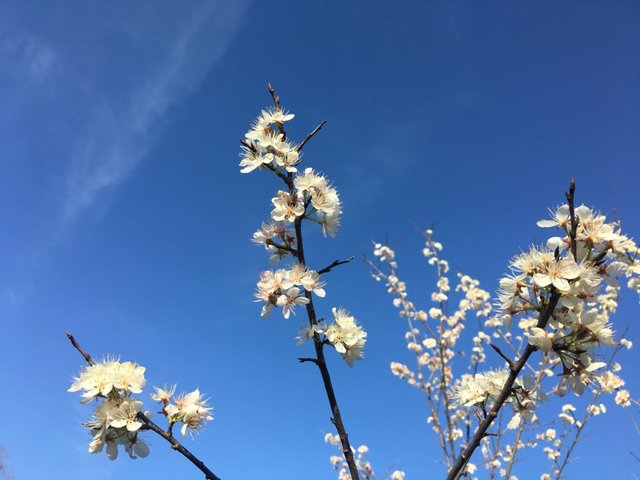
Now is the time to start planting edible landscapes and resilient ecosystems.
Annual agriculture, and especially the warlike way it is done by big agribusiness, is not a sustainable or resilient model. While it may have more returns in the short turn, we’re shooting ourselves and future generations in the foot if we believe it will take care of us in the future. We need to start thinking about and acting upon the future. And in the event that much of this horror show that is climate change can somehow “be turned around”, that much the better for us as we’ll have mature edible landscapes to harvest from in abundance! Sounds like a great vision to me!
Just as the farmers of the Sahel couldn’t rely on the “powers that be” to make the change for them, we too must rely on indigenous and small and local solutions. The building of resilient ecosystems really is in our hands – no back yard is too small so get planting!!!!!!
Posted from my blog with SteemPress : http://www.ozarkmountainjewel.com/2019/04/16/planting-trees-as-the-climate-changes-no-backyard-is-too-small/
I love it! No backyard is too small to start planting.
Amazing how when we stop relying on authorities to make decisions we work something out faster and better... well faster al least in the start of a solution. Sounds like an awesome book you're reading. The farmers from Sahal are figuring it out or was this an old practice they continue to use... was it ust unnoticed by outsiders perhaps?
Perennials it is!
Exactly! You said it senor! Not sure but I think the farmers had been practicing this for a while and the “agencies” noticed them doing it and how well it worked! Typical! Listen to the people on the ground ✌🏼
Posted using Partiko iOS
Those type of things are difficult to see from behind a computer screen on the other side of the world!
Really great research you are doing @mountainjewel and an even more amazing intention that you are setting to take the action to plant those trees and perennials that have a chance of being adaptable to climate change! You are a great role model and inspiration to steem homesteaders to be more prepared and resilient!
Thank you for sharing! Climate change is a big motivator for me and the work I do through my blog. I really like that you are promoting perennial based food production. Thanks again for sharing the awesome post here on STEEM!
Posted using Partiko Android
It is a huge motivator for us too! Glad to hear another is paying attention 🙌🏼 thanks for stopping by! I’ll check out your page 🌿
Posted using Partiko iOS
You've been visited by @riverflows from Homesteaders Co-op.
No backyard is too small indeed. I agree that the more resilient plants we plant NOW, and the better systems we get in place, the more we have chance to adapt. Really interesting about the Sahel - a great article all around, and it is very brave of you to research all of this. I do find myself ignoring it because I just feel too much grief when I read about it, but I should woman up really and face it - however, I do everything in my garden with the climate in mind, and as much as I can - including supporting and sharing posts like this! Local and indigenous solutions ARE the answer - if only the farmer rhetoric would calm down a bit and people stopped seeing them as heroes and starting supporting them to create alternative systems.
A community marketplace of ethical, handmade and sustainable products available for STEEM, SBD (and USD): https://homesteaderscoop.com
follow: @homesteaderscoop
I feel you! The grief is so real and has inhibited me for years to look into it. Together we can move forward 😘🌿💚
Posted using Partiko iOS
Hi @mountainjewel!
Your post was upvoted by @steem-ua, new Steem dApp, using UserAuthority for algorithmic post curation!
Your UA account score is currently 4.907 which ranks you at #1264 across all Steem accounts.
Your rank has improved 2 places in the last three days (old rank 1266).
In our last Algorithmic Curation Round, consisting of 236 contributions, your post is ranked at #23.
Evaluation of your UA score:
Feel free to join our @steem-ua Discord server
Africa has the fastest growing population with Nigeria in the lead. In 30 years the current 1,2 billion will be 3,2 billion people causing all of the global growth almost. I am afraid nothing helps against these kind of growth numbers but you can try ofcourse.
yes, the population growth is another factor for why so many are going hungry in these areas. this article mainly focused on how we in other areas can try to abet the catastrophes of desertification and food deserts through planting trees now before our populaces are faced with the dire trouble that so many places in Africa are currently.
I read something else recently on farmers in African countries using native trees to help crops grow. Working with nature rather than against it is certainly something I've learnt more about since trying to grow in the driest state of the driest country! I see if weeds are edible before I rush to pull them out now.
Posted using Partiko Android
Yes!!! Love what you said about checking for edibility of the weeds. That’s where it’s at; aligning with nature and what is. I didn’t realize you were in the driest region! Wow! Best luck 💦💦💦
Posted using Partiko iOS
yes yes yes!!
sing it to the mountains!
Focusing on how we can adapt and sustain future generations while facing climate change head on is so important in our present lives. Seeing how many people mourned the roof of Notre Dame in destruction while we continue to consume plastic and styrofoam on mass scales and refuse to engage in conversations about our climate and our environmental impact... makes me shudder.
Thanks for sharing such supreme articles on the chain, seriously inspiring me!
No such thing as carbon dioxide climate change. Http://geoengineeringwatch.org
I like the part about how crops grow better near trees.
No back yard is too small, indeed! We're increasingly growing many of our own foods, and keep adding bits and pieces... about 60% of what was lawn when we moved in 8 years ago is gone; a good bit of it replaced with perennial food plants.
I just wish they'd get all that cattle OFF feed lots, and ONTO prairie grasslands; don't grow corn, grow prairie grasses. But that's a whole other story...
=^..^=